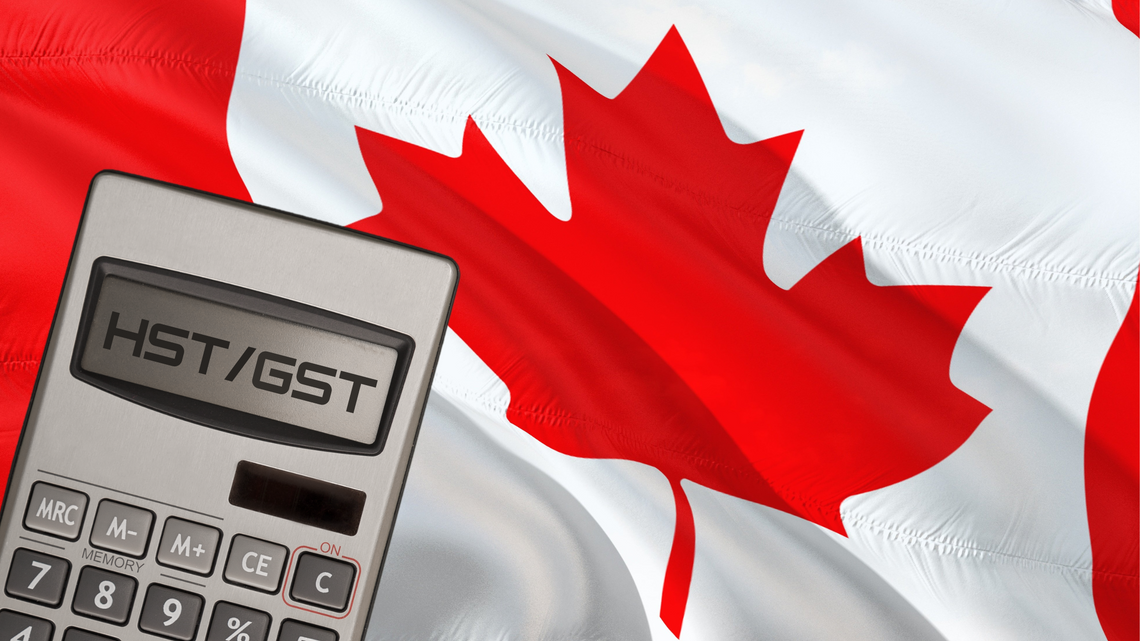Comprehending the intricacies of Canada’s tax system is essential for maintaining compliance and ensuring seamless operations in the Canadian marketplace. Although navigating Canada HST, GST, and PST may appear overwhelming for US e-commerce brands, it’s more straightforward than it initially seems. In this article, we’ll break down each type of consumption tax, discuss the specific scenarios in which sales might be subject to these taxes, and explore the requirements of tax registration for US businesses.
Understanding GST and HST for Canada
Canada’s tax system for goods and services features a multi-layered structure that includes the goods and services tax (GST), provincial sales taxes (PST), and in certain regions, the harmonized sales tax (HST). We’ll explain each of these taxes in more detail and their relevance to e-commerce merchants.
Goods and Services Tax (GST):
GST, or goods and services tax, is a federal value-added tax levied on most goods and services. With a standard rate of 5%, Canada GST applies broadly to products purchased by Canadian consumers, including those sold by foreign businesses.
Provincial Sales Tax (PST):
Unlike GST which is federally imposed, PST, or provincial sales tax, is levied by individual Canadian provinces on the sale of goods and services within their jurisdiction. PST rates vary, ranging from 0% to 9.975%, depending on the province. It’s important to understand each province’s specific requirements, as PST is only applied and collected when the recipient lives in a PST province and the shipment clears customs in that same province.
Harmonized Sales Tax (HST):
HST, or harmonized sales tax, combines Canada’s federal goods and services tax with provincial sales taxes. This integration, adopted by certain provinces, simplifies the tax structure by allowing businesses to apply a single HST rate rather than separate charges for GST and PST. Canada HST rates differ across regions, typically falling between 13% and 15%.
Are US E-Commerce Sales Subject to Canada HST/GST?
Transactions between US e-commerce businesses and Canadian consumers are subject to consumption taxes. For non-postal carrier shipments from the US to Canada, the tax de minimis threshold is $40 CAD. This means orders valued over approximately $29 USD are liable for GST, PST, and HST as applicable, based on the destination province.
To manage these taxes, brands can choose between Delivered Duty Unpaid (DDU) and Delivered Duty Paid (DDP) billing terms for their shipments. Under DDU, the recipient is responsible for paying any import duties and taxes upon delivery. Conversely, with DDP, the seller assumes all responsibilities and expenses associated with shipping. Usually the merchant will handle collection of duties and taxes from consumers during the checkout process and then arrange for their shipping carrier to pay these costs upon customs clearance. We advise using DDP shipping as it provides a better customer experience by preventing unexpected costs and customs delays.

Do You Need To Register for a Canadian Tax ID?
For US e-commerce brands shipping to customers in Canada, it’s crucial to assess your distribution model and customs clearance program to know what your tax obligations are. Many direct-to-consumer brands qualify as “unregistered non-resident” shippers, exempting them from the need to apply for a business number or file separate Canadian taxes. Canada HST/GST registration is required if a merchant holds inventory in Canada, their place of sale is Canada, or they are a Canadian corporation.
Under the DDP shipping model, all taxes are collected at the point of sale and settled during the customs clearance process, with no further tax liabilities for the merchant. This system is facilitated by the Canada Border Services Agency (CBSA) and compliant with the Canada Revenue Agency (CRA). Therefore, e-commerce brands shipping personal use goods to Canadian consumers generally don’t need to worry about Canadian tax registrations or filings, as all taxes are accounted for at the border.
The requirement to register for Canada HST/GST, which applies to sales exceeding $30,000 CAD in a calendar year, is specific to sales occurring within Canada. For most US e-commerce brands, sales fulfilled from the US are typically exempt from this threshold. However, brands with more complex sales and distribution models may still require registration. It’s best to consult with a Canadian tax and trade lawyer before registering for Canada HST/GST.
How Passport Can Help
Here at Passport, we understand the complexities that come with international shipping, especially in terms of fiscal compliance related to taxes such as Canada HST. With best-in-class parcel logistics and a user-friendly software platform, Passport is the shipping carrier that growth-focused brands trust to expand their business internationally. Our team of compliance experts are available to guide you through the Canadian market and answer any additional questions you have about their tax system. Simply reach out to us here to get started.
Frequently Asked Questions:
What is Canada’s HST?
Canada’s harmonized sales tax (HST) is a combined tax that merges the federal goods and services tax (GST) and the provincial sales tax (PST) charged in certain provinces. It simplifies the taxation process by applying a single tax rate to most goods and services, instead of charging GST and PST separately. The HST rate is 15% in all participating provinces except Ontario, where it is 13%.
What is GST, HST, and PST in Canada?
Canada has a goods and services tax (GST) with a standard rate of 5%. On top of that, some provinces either charge a separate provincial sales tax (PST) typically ranging between 5% – 9.975%, or use a harmonized sales tax (HST) that includes both GST and PST. The HST rate is 15% in all participating provinces except Ontario, where it is 13%.
What is the GST rate in Canada?
Canada’s goods and services tax (GST) has a standard rate of 5%. On top of that, some provinces either charge a separate provincial sales tax (PST) typically ranging between 5% – 9.975%, or use a harmonized sales tax (HST) that includes both GST and PST.
Do US companies have to pay Canada GST/HST?
Transactions between US e-commerce businesses and Canadian consumers are subject to consumption taxes. For non-postal carrier shipments from the US to Canada, the tax de minimis threshold is $40 CAD. This means orders valued over approximately $29 USD are liable for GST, PST, and HST as applicable, based on the destination province.
What is the VAT tax in Canada?
Canada implements a federal value-added tax (VAT) known as goods and services tax (GST) with a standard rate of 5%. Additionally, some provinces either charge a separate provincial sales tax (PST) typically ranging between 5% – 9.975%, or use a harmonized sales tax (HST) that includes both GST and PST.
Is Canada GST or VAT?
Canada has a goods and services tax (GST) with a standard rate of 5%. Additionally, some provinces either charge a separate provincial sales tax (PST) typically ranging between 5% – 9.975%, or use a harmonized sales tax (HST) that includes both GST and PST.
Is VAT the same as HST in Canada?
Canada implements a federal value-added tax (VAT) known as goods and services tax (GST). Additionally, some provinces charge a provincial sales tax (PST), which is a separate tax exclusive to that province. In certain provinces, the GST and PST are combined into a single tax called the harmonized sales tax (HST), which effectively integrates both the federal and provincial components.
Disclaimer: This document does not constitute trade or tax advice. It is provided as a background document for informational purposes only. Merchants should consult a Canadian tax and trade attorney for guidance on their particular situation.




